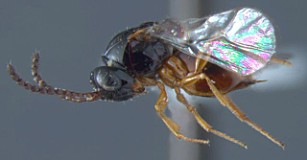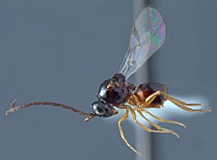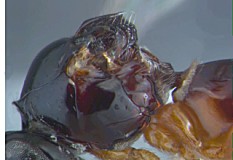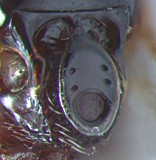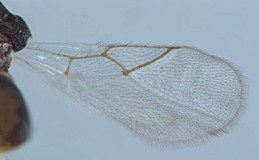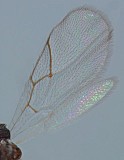Aganaspis pelleranoi (Brèthes)
Remarks
This is perhaps the best known and most extensively studied eucoiline parasitoid of Tephritidae, with biological data reported as early as 1912 (von Ihering 1912).
Taxonomic History / Nomenclature
Ganaspis carvalhoi Dettmer, 1929 is a junior subjective synonym of Aganaspis pelleranoi, and some of the host records and distribution information will therefore be found under the name carvalhoi.
The generic placement of the neotropical species of Aganaspis is somewhat controversial (Diaz et al. 2006) and in need of further study. Forshage (2009 dissertation, Uppsala University) has provisionally transferred several previously descibed neotropical species to Aganaspis, and retains pelleranoi in Aganaspis.
Diagnosis and Relationships
See the Aganaspis nordlanderi page for distinguishing characteristics to separate these two species, and the Aganaspis daci page to separate the native Neotropical species Aganaspis nordlanderi and Aganaspis pelleranoi from the introduced species Aganaspis daci.
Distribution
No referenced distribution records have been added to the database for this OTU.
Biology / Hosts
Aganaspis pelleranoi has been reared from numerous species of Anastrepha from throughout the Neotropical Region. Specific host records include Anastrepha distincta Greene (Katiyar et al. 1995), Anastrepha fraterculus (Wiedemann) (Brèthes 1924), Anastrepha ludens (Loew), Anastrepha obliqua (Macquart) (Aluja et al. 1990), Anastrepha serpentina (Wiedemann) (Costa Lima 1940), Anastrepha striata Schiner (Clausen 1978), Anastrepha sororcula ( Aguiar-Menezes and Menezes 2001), Ceratitis capitata (Wiedemann) (De Santis 1965), and Rhagoletis turpiniae Hernández-Ortiz (Hernández-Ortiz 1993). Lonchaeidae are also attacked, though less frequently than tephritids (Wharton et al. 1998). The published records indicate that Aganaspis pelleranoi has little or no host plant preferences (e.g. Guimaraes et al. 1999). In experimental and field studies in Brazil Aganaspis pelleranoni was attracted to volatiles emitted by drosophilid larvae in rotting guava, using vibrotaxis to locate the host (Guimarães and Zucchi 2004). Schliserman et al. (2004) include this species as one of several probably attacking Anastrepha schultzi in Juglans in Argentina.
Biology and Behavior
Detailed biological information on Aganaspis pelleranoi can be found in Ovruski (1994a, 1994b), Ovruski and Aluja (2002), and Goncalves et al. (2013). Spatial and temporal distribution was also investigated by Sivinski et al. (2000). Olfactory responses were examined by Guimaraes and Zucchi (2004). Aganaspis pelleranoi is a solitary, koinobiont endoparasitoid that oviposits in late instar larvae of its tephritid hosts and emerges from the host puparium.
Biological Control
This is one of only two species of eucoiline Figitidae specifically utilized in biological control programs as of 2010. Aganaspis pelleranoi (Brèthes) was reared and released from 1941 to 1945 in several areas of Tucumán, Argentina (Nasca 1973). More recently, this species has been mass-produced in Metapa de Dominguez, Chiapas, Mexico (Ruiz et al. 1996).
Page last updated September, 2011.
Page last updated September, 2011.
